Resplendent Clinic offers you the best hair transplant in Delhi at affordable prices. Dr. Sukhbir Singh has been a pioneer in the field of hair transplant with 15+ years of experience. If you are looking for hair transplant in Delhi, Sukhbir Singh from Resplendent Cosmetics is undoubtedly the best hair transplant clinic in Delhi.
Our highly qualified and dedicated doctor has more than 15+ years of experience, and has treated thousands of patients successfully.
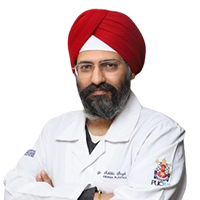
Cosmetic | Plastic Surgeon | MBBS | MS General Surgery | DNB Plastic Surgery
With over 15 years of experience in Cosmetic Surgery and Hair Transplants, Dr. Sukhbir is one of the best Cosmetic Surgeons in Delhi.
Natural Looking Result
Highly Skilled Surgeons
15+ Years Of Experience
10,000+ Surgeries
A hair transplant surgery is a medical procedure to treat those with permanent hair fall. But, like all medical procedures, it involves a minimal amount of risk and recovery time may vary.
It is better to know in detail about the procedure, before deciding to go in for one. Here, we try to help you understand, what is a hair transplant procedure, how is it done and where can you have the best hair transplant in Delhi.
The Cost of hair transplant depends on many aspects in Delhi which are related to the procedure. The key factor influencing hair transplant cost is the number of hair grafts you need to cover the bald area. However, the hair transplant cost is INR 50 per graft and also depends on the place and the hair transplant surgeon and also their experience.
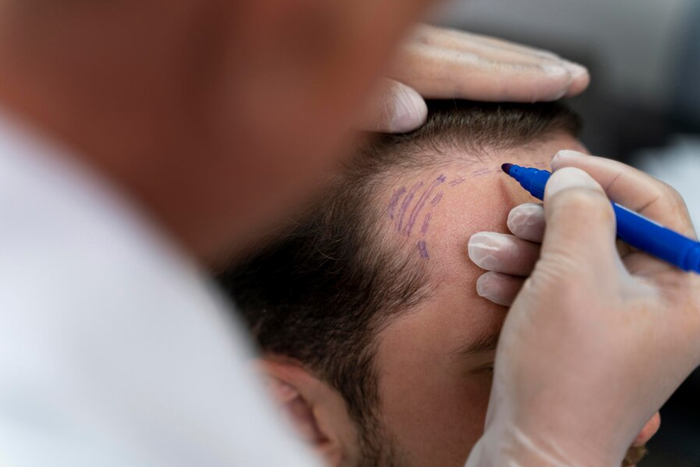
There are a number of advantages of the hair transplant surgery over the others to help regrow the lost hair.
While there are many advantages to getting a hair transplant in Delhi, you need to keep in mind a very important point. The hair loss will continue even after the surgery as this surgery is only done to cover the bald patches, not to treat the hair fall. This may lead to an uneven appearance of the hair and you may have to undergo more than one surgeries.
Can anyone get a hair transplant? A reputed surgeon conducting hair transplant in Delhi cautions, not everyone is a good candidate for hair transplant.
After the surgery, the doctors at Resplendent Cosmetic – one of the best hair transplant clinic in Delhi – will cover the surgical site with bandages, which will be removed within 1-2 days. You can return to work within a week if you are undergoing FUE. Recovery time for FUSS may be higher. But, do not undertake strenuous physical activities unless your doctor gives you a go ahead to do so.
The doctor may do some basic tests to understand the underlying cause for your hair loss. It is possible to have temporary hair loss due to multiple reasons such as a major illness or an emotional setback like a death in the family, hormonal changes due to discontinuing birth control pills, pregnancy, childbirth or menopause. In these cases, the hair will naturally grow back and no treatment is needed.
Other reasons for temporary hair fall may include scalp infections, thyroid issues, ringworms, scar causing diseases etc. In such a case, the doctor may suggest going for topical hair fall treatments in Delhi itself. These can include lotions, ointments and oral medicines. Also, a diet rich in proteins and iron can help in case of temporary hair fall.
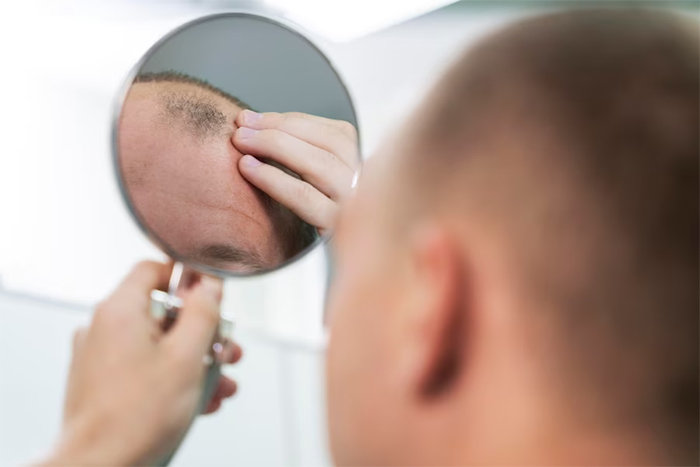
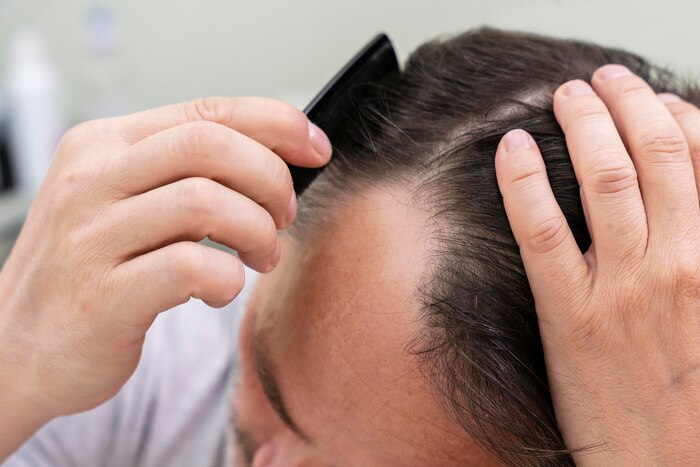
But, what with the day-to-day stress, the rat race ensuring that health and proper diet becomes a distant dream; even the rich, shiny hair has become a part of that distant dream. The excessive hair fall and the unhealthy lifestyles ensure that the loss of hair becomes permanent. The most common surgical method to permanently repair the hair loss is hair transplant surgery. With the advancement of technology and increase in the specialists for this treatment, you can now easily get a hair transplant in New Delhi.
Although there are a number of hair restoration techniques available, in this particular piece, we will look at the details of hair transplant surgery after briefly touching PRP hair treatment (in Delhi or elsewhere). We then look at the available types of hair transplant in Delhi NCR, the benefits, costs and some of the most common queries that you may have.
However, if your hair fall isn’t temporary but permanent, the doctor may ask to go for a few tests or even a biopsy to ascertain the cause of your hair fall. Once the reason is ascertained, the doctor may prescribe the line of treatment to be followed.
There is a possibility that the doctor suggests going in for a hair transplant. With the advancement in technology multiple methods of the same have been developed and we have some of the best hair transplant clinics in Delhi.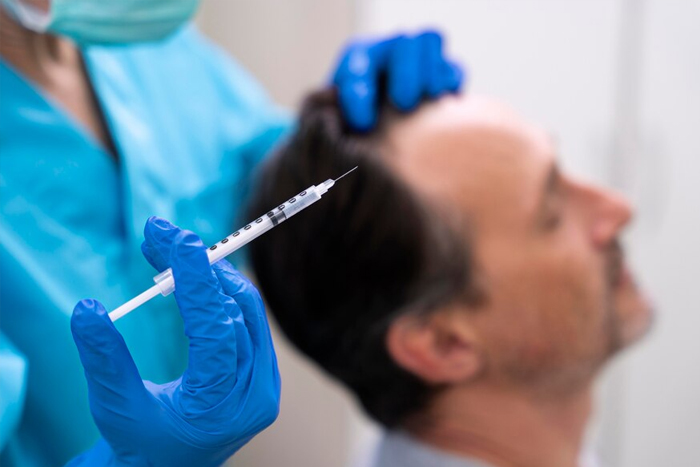
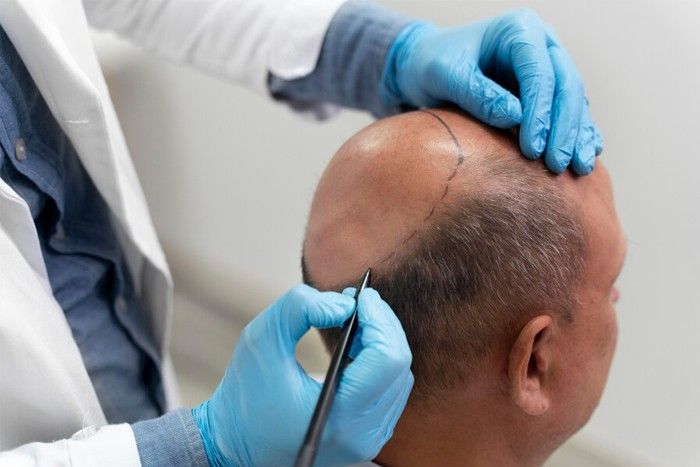
Resplendent Cosmetics is a leading hair transplant clinic in Delhi for several reasons:




















The cost of the surgery depends on the number of grafts needed, and your doctor should be able to help with the amount for your specific case.
Generally, there are no side effects of the hair transplant surgery, but there might be a rare possibility that you get numbness, irritation or mild pain during recovery.
The surgical bandages will be removed within 1-2 days after which you can resume normal activities.
Your transplanted hair will fall off after a week or two. Then natural hair growth will occur and you can see the effect in 4-6 weeks after your hair transplant.
Consult your doctor and they will recommend follow up surgery if required.
The hair growth after transplant is natural and you do not need to take any extra precautions with it.
Hair transplant is a process in which permanent hairs present in back of scalp or body hairs (donor areas) are removed by FUE or FUT technique and replaced in the bald sites (recipient sites) of androgenetic alopecia areas especially in the frontal hairline, temporal or crown regions.
Transplanted hairs though permanent require nourishment for their future indefinite growth. As thinning of skin and wrinkles occurs to all with age, so even the transplanted hairs start getting thinned with age. So as to keep them thick and maintain a long tern result, your physician shall recommend the vitamins and sprays required for regular maintenance.
Yes, hair transplant is absolutely safe if done properly and by a certified plastic surgeon who not only takes care of your donor area and preserves the same for future use but also the local anesthesia dosage required during the surgery to maintain safety of the patient. Also make sure that the place u getting transplant done is clean and tidy with good facilities.
Hair transplant is an almost painless process if done properly with experienced certified doctors. The only time u experience pain during the process is during local anesthesia administration but after that one does not feel anything during the entire hair transplant process.
Hair transplants absolutely works and gives a consistent natural result if done properly by a certified plastic surgeon. Transplanted hairs grow well with time and they also follow the normal aging process like greying, etc. U can trim and apply dye on your transplanted hairs also.
Hair transplant can be done by two techniques basically, FUE and FUT (strip harvest). FUE which is more commonly done by us involves extraction of follicular units one by one from your donor sites and transplanting into the recipient site. Basically, this is a no cut, no stitch technique. In FUT on the other hand, a strip of skin with hairs is taken out and stitches are applied to close the donor site. This strip is further cut into small units and the hairs are extracted and then transplanted into the recipient site.
The cost of hair transplant depends on several factors. First and foremost is the number of follicular units /grafts/hairs required. That assessment is done by your surgeon who guides u through the entire process. Secondly whether the session involves any booster also like BIO -FUE in which plasma treatment also called PRP is done during the transplant process. Last but not the least, is your hair transplant being done by doctor or untrained technicians determines your price and your overall result.
Hair transplant is based on a simple principle that the permanent zone hairs including back of scalp and body hairs especially beard hairs are used to replace the androgenetic alopecia affected zones especially the frontal, temporal, crown areas. Once the recipient site has received the permanent hairs it grows as a natural process to give permanent good results.
Transplanted hairs always grow if great care is taken during the transplantation process not only during harvesting (extraction) of the follicles but also during the implantation process. Extracted hairs are very fragile and great care needs to be taken during the implantation process following the No-touch Root technique.
FUE hair transplant involves extraction of the follicles by motorized machine using a sharp punch which causes mild scoring and hairs can be easily pulled out by the assistant and stored in a solution before final implantation is done. So, FUE is basically is a no cut, no stitch technique in which healing occurs very fast as the punch used is 0.8 mm. So, the roots are extracted leaving in-between intact follicles to help in speedy recovery and no visible donor deficit.
Bio-FUE hair transplant is nothing but FUE combined with biological boosters like PRP (Platelet rich plasma) which not only acts as a good preservative solution but also boosts the process of healing and enhances the anagen phase and reduces the catagen phase thereby promoting thicker and fuller hair growth in a short span as compared to conventional FUE.
As the transplanted hairs are fragile, one needs to take care of the postures which might affect the transplanted roots. The basic idea is to avoid friction between the scalp and the pillows, so wither one can sleep absolutely straight, supine position or any lateral position without creating any excessive friction.
Beard is the next best donor area after back of scalp for harvesting follicles and transplanting into the recipient site. Beard hairs have a prolonged anagen phase and grow very naturally for giving permanent results.
Copyright - All Rights reserved © Resplendent Cosmetics
Powered by ITPL